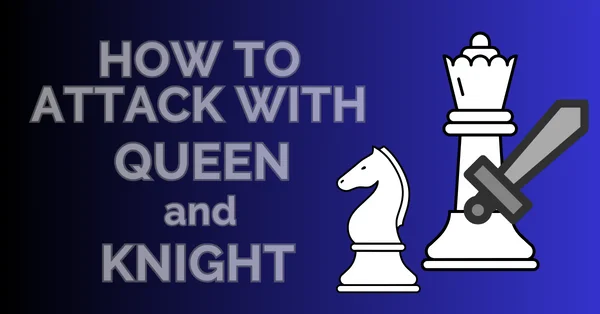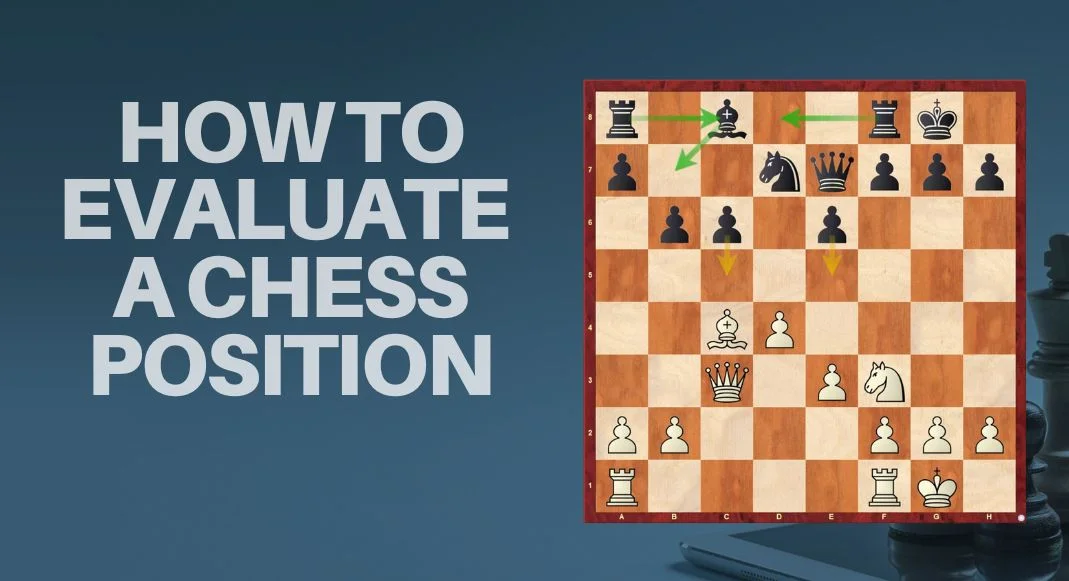

In this article, we will take a look at how to evaluate a chess position systematically and logically. Analysis of chess positions is a process that involves assessing various factors to determine which side has the advantage. During a game, every player goes through a large number of different positions on the chessboard.
A chess player’s strength is proportional to the correctness with which he analyses these chess positions. The winner is the player who can perform a deeper and more accurate assessment of the positions that arise or in the variations he calculates.
Thus, the art of correctly and objectively performing chess position analysis is the decisive factor in a player’s skill which prompts him to take the right decision.
However, in modern chess players have limited time and therefore it is important to have a structured evaluation process.
Why should you evaluate positions?
First, let’s try to answer a question that any chess player might have; Why should we evaluate chess position?
In any chess position, it’s ideal to think in a structured manner.
After the opponent makes a move the first step is to identify the ideas and consequences of the move. Then we see how the move changes the evaluation of the position. Next is to list our Candidate moves. Now analyze the Candidate’s moves in a logical sequence. At the end of our analysis, we conclude the position. This conclusion is an evaluation of the position.
We observe that evaluation plays a crucial role in two places. First is before we list the Candidate moves.
The evaluation of the position helps us pick our Candidate moves. If we did not evaluate the position then the player may choose random moves or choose a move that comes to his mind first. (This movie may or may not be the correct move in the position)
The second place where evaluation plays a crucial role is after the analysis of a candidate’s move.
Evaluating the position at the end of a variation helps the player judge whether the candidate’s move achieves its objective.
So, summing up, evaluating a position helps a player to decide on a list of candidate moves and then choose the best move from that list through good chess positional analysis.
Pros of Analyzing a Chess Game
Analyzing a game provides us with meaningful insights about the course of the game. During the post-game analysis, our mind is much clearer and we can see and explore more chess positions.
By analyzing how the position evaluation changed throughout the game we get the bigger picture. A level evaluation throughout means both players played a good game without any major mistakes.
A single or frequent evaluation swing means that phase of the game needs improvement. This is the biggest advantage of analyzing a chess game. A player can find out which area of the game needs improvement.
Preliminary Analysis
In the preliminary analysis, the first step is to enter all the variations you calculated during the game. Then comment on these moves. Answering questions like, but not limited to
- Why choose this move over other moves?
- Was there any difficulty in the positions?
- Did the player lack clarity?
Then the player should point out all the critical moments that arose in the game. These critical moments should have adequate commentary. Preferably, in critical moments the player should mention the plans for both sides.
The next step is to analyze the position deeply.
Deep Analysis
After the stage of Preliminary analysis, we reach the stage where we have to deep dive into the position.
This is a multi-step process that involves several steps to understand the progress of the game.
Here the goal is to proceed slowly and look at all the variations and critical moments in depth. Evaluation plays a key role here.
Initially, it’s important to review the opening moves and identify any mistakes or deviations from known theory.
Critical moments should be given special attention in the game. These are the positions where the evaluation of the position can change drastically with the decision you make. This could make the balance could tip in favor of one player.
In critical moments a player must focus on two things:
- List of candidates moves in order of importance.
- All the tactical possibilities that can arise for both the players.
Next, see how was your Time management. Reflect on how you spent your time during the game. Players tend to spend more time in positions where they are not sure of the chess board evaluations that arise during calculation.
Make sure to assess the position at the end of each line (for eg. Nxb4 Qxb4+=) If you can verbalize it then it’s even better. This gives you an idea of the right continuation.
To analyze the right continuation, we need to know how to analyze a chess position and how to evaluate it.
Next, we will learn the step-by-step process to evaluate any chess position.
How to Analyze a Chess Game: Evaluation of a Position
First Figure out the evaluation of the current position on the board. It doesn’t matter what happens in 2 to 3 moves, the evaluation should be based on the current position.
This assessment of the current position on the board helps the player narrow down the options from a list of available moves.
After the preliminary evaluation of the position, we face three scenarios.
- If you are better in the current chess position then you should look for moves that either maintain that edge or improve it.
- If you are equal then you should look for moves that maintain the balance or you can take risks and go for a continuation that might give you an edge.
- If you are worse then you should look for moves that change the evaluation to at least equal.
A chess player has to learn the skill of analyzing the various important factors of the position to come to a correct evaluation of the position.
Evaluation of a chess position is based on 5 key factors:
- King Safety
- Material
- Piece Activity
- Weaknesses
- Space advantage
Let’s take a look at each one by one
Step 1: King Safety
The primary task for any chess player is to keep the king safe. All the other factors that are listed below are secondary to this. That means a player must not hesitate to lose other advantages if it comes to defending the king.
A quick way to assess the King’s safety in a position is to check the pawn cover in front of the King and the pieces defending it. You should look for a plan to attack the king If the opponent has a shattered or nonexistent pawn cover or lacks pieces to defend the king.
Another important factor to consider is the presence of the Queens. If the queens are off the board, then it improves king safety for the weaker king (considering all other things to be equal)
Step 2: Piece Activity
The activity of the pieces is the next factor to consider while evaluating a position. A quick way to gauge the activity of a piece is to look at the squares it controls and all the squares it can go to. If it can access many squares quickly then the piece is highly mobile.
The next step is to check the usefulness of a mobile piece. A mobile piece that performs an important function is active. The function can be like controlling an important square or open file, attacking enemy pawns, etc.
Step 3: Material
This factor is the easiest one to understand for players. Piece values are one of the first things any player learns when learning to play chess. So, to assess the material on the board a simple summation of the piece values yields the result.
And it is easier to play with more material as well. The more material you have the more attacking/defending forces available.
If a player has more material than the opponent, considering all other factors to be equal then he will have a high probability to win the game.
A simple rule of thumb is that when a player has more material, he should try to exchange pieces. By exchanging pieces you reduce the attacking potential of your opponent.
Step 4: Weaknesses
The pawns that cannot be defended by other pawns are considered to be weak. Since pawns move at a slow pace, a pawn weakness can become an easy target for the opponent’s pieces.
Having a good pawn structure is a long-term positional plus. But it is not absolute. King safety and piece activity triumph over weaknesses. Strong players sometimes voluntarily choose to have a bad pawn structure to keep their king safe or to have active pieces. Here king safety and active pieces take precedence over everything else.
Step 5: Space Advantage
The chessboard is made up of just 64 squares. So, there is limited space for 32 pieces to move around. Naturally, if a player can control a majority of this space then he would have an advantage.
In the starting position, both white and black control four ranks each. The space is equally shared so neither player gets a space advantage.
If a player has a pawn on the fourth but the opponent has no pawn then it confers a slight space advantage. But when one side’s pawn crosses over into the 5th rank, then that side gets a tangible space advantage. The more space we have under our control, the more freely our pieces can move and infiltrate our opponent’s position.
Although it is the last factor to consider it plays a significant role in closed positions where mobility of the pieces is an important aspect.
Examples of Chess Position Evaluation
Example 1:
In the position below it is Black to move.
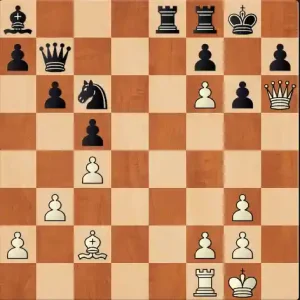
The first factor is the King safety and we can immediately see that the King is under attack. The Queen and pawn were able to close in on the King due to a weak pawn structure (f7-g6-h7) and lack of defending pieces around the king. Black has no way to prevent checkmate.
Final evaluation: Winning for White
Example 2:
Here it is White to Move
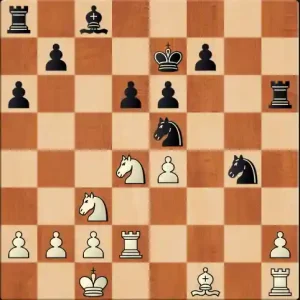
King Safety: The White King is safe; The pawn structure is intact and has many pieces defending it. The Black King is in the middle but has a stable pawn cover and pieces defending it. Also, the queens are off the board so the Black king is not in any real trouble.
Material: Equal for both sides
Piece Activity: The white knights are restricted by the Black pawns. The light-squared Bishop on f1 is better than its counterpart on c8. However, the Black knights are dominant and control important squares. The White rooks have no real targets. The black rook on h6 is excellent with a target on the h-file. So, an advantage to Black.
Weaknesses: The e4 pawn is isolated but currently it is not being attacked. But there are many weak squares in the White camp.
Final evaluation: Better for Black due to superior Piece activity and weaknesses in White camp.
Example 3:
This example highlights how Piece activity triumphs over static factors like a pawn weakness.
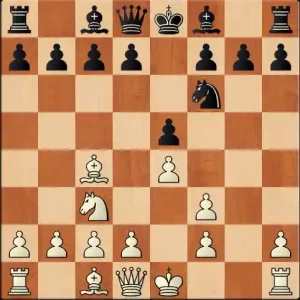
King safety: Both Kings are relatively safe.
Material: Equal for both sides.
Piece activity: White’s Bishop and Knight are active. Black has only one piece developed but it is restricted by the pawns on e4 and f3.
Weakness: White has doubled pawns on f2 and f3 but Black is nowhere near to attack them. So White’s activity will be the determining factor.
Final Evaluation: Better for White
Do you like the Evaluation of Positions? Then, you might like 6 Reasons to Learn How to Do It as well as Rapid Chess Improvement.
Discover more from reviewer4you.com
Subscribe to get the latest posts to your email.



